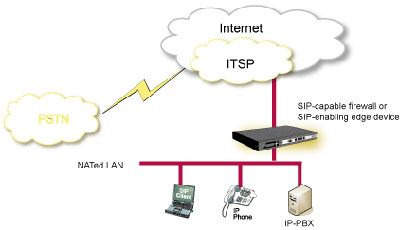What is a SIP Trunk?
A SIP Trunk is used to make a simultaneous call that is routed over the IP backbone of a carrier using VoIP technology.
- SIP Trunks are used in conjunction with an IP-PBX and are thought of as replacements for traditional PRI or analog circuits.
- SIP stands for Session Initiation Protocol.
There are three components necessary to successfully deploy SIP trunks:
- PBX with a SIP-enabled trunk side,
- An enterprise edge device understanding SIP
- Internet telephony or SIP trunking service provider

SIP Trunking reduces costs by eliminating the need for separate voice and data connections, and expands the potential for communications convergence using both voice and data together. As a company grows, all necessary infrastructure to handle additional voice/data traffic is already in place.
One of the immediate ways SIP trunks reduce communications costs is by eliminating the need to purchase ISDN, BRIs, PRIs or local PSTN gateways.









